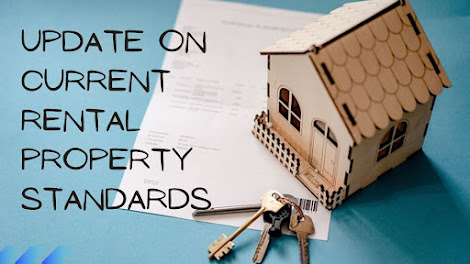How to Protect Your Property Portfolio from Rising Inflation
Property
assets appreciate gradually over time and are considered a fairly
inflation-proof investment since, although the economy may be sluggish, it is
very unusual for bricks and mortar to drop in value.
However,
with rising inflation putting pressure on other aspects of owning rental
properties or managing a portfolio, there is the likelihood that higher
mortgage interest rates, utility costs, and council tax will impact your bottom
line.
Here we’ll
run through some suggestions to help you maintain profitability, along with
guidance about assessing the fair rental value of each rental property in your
portfolio to recognise the increasing demand for quality accommodation,
particularly in the most sought-after areas of West Sussex.
Why Does Inflation Impact Rental Property
Profitability?
Inflation
itself doesn’t normally have any marked impact on the valuation of a property,
but it can affect other outgoings. Managing those costs during times of swift
price rises can be essential to ensure your portfolio achieves the returns you
expect to make on your investments.
Selling up
is also inadvisable, given that the highest returns are realised over at least
ten years. Purchasing a residence with a suitable rental value should cover the
running costs, with a profit element.
This ‘dual’
return is one of the key reasons property is such a valued asset, whether to
retain towards retirement as a low-risk investment or benefit from long-term
market growth.
An important
consideration is that while interest rates may mean some expenses are higher,
it also means that average rental premiums have risen. In many cases, the best
course of action is to re-evaluate your portfolio to see where increases would
be reasonable and fair.
In some
situations, landlords with tenants in situ tied into a tenancy agreement may be
limited in their recourse to introduce higher rent, so it can be useful to look
at proactive ways to manage the costs associated with a portfolio.
Other
solutions include marketing a vacant property or new portfolio acquisition as a
short-term holiday rental, if permitted within any mortgage agreements you may
have, seeking a higher income while interest rates settle.
Controlling Rental Property Costs
During Rising Prices
For most
landlords, the mortgage is the highest expense linked to a rental property.
Although interest rates are currently high due to the successive base rate
increases introduced by the Bank of England, they are forecast to revert in the
coming months.
The
Economics Observatory estimates that within the next 12 months, inflation will
fall to 2%, in line with governmental targets, and the current average 6%
mortgage interest rates will fall to 3.3% by 2026.
In the
meantime, rental mortgages can be flexible, and professional property investors
may have several options to consolidate, extend or reduce their payment
obligations through:
Extending
the mortgage term to reduce monthly repayment costs. Some lenders will offer
terms of up to 40 years at the outside, but most financial institutions will
offer mortgage terms of up to around 30 years.
Switching
from repayment to interest-only. Although fewer buy-to-let homes are purchased
on a repayment basis, this could be an effective solution in this circumstance.
Consolidating
mortgage borrowing. This may benefit portfolio owners with a larger volume of
properties, where lenders keen to secure their business may be more competitive
when considering a larger portfolio mortgage rather than a standalone product.
Much depends
on your financial position and any borrowing products secured against a rental
home. Still, there are often a few options that can be advantageous, even
during a period of high-interest rates.
Meeting Market Demand to Improve
Property Portfolio Returns
The next
area to consider is the income your portfolio provides and assessing how the
costs of running and owning a property have changed over the last few years. We
recommend landlords and investors compile detailed budgets to have
comprehensive oversight of their margins, looking at:
·
Maintenance
and repair costs.
·
Council
tax and utilities.
·
Borrowing
interest and product fees.
·
Gas
and electricity safety inspections.
·
Landlord
licences for HMOs.
·
Insurance
coverage.
Once you
have a clear picture of the costs, it becomes easier to evaluate whether the
rental yields currently achieved are sufficient, and alongside a valuation, can
help you make informed decisions about the best way forward.
The biggest
cost driver is void periods, where a portfolio property that is not generating
an income can swiftly become a drain on your broader investments, given that
most of the operational costs remain, regardless of whether the residence is
untenanted.
Working with
an accomplished and highly regarded lettings management team can improve your
prospects significantly, advertising properties to the right demographics,
using outreach marketing to reduce the duration of vacancies, and ensuring your
rental property is presented in a professional and appealing manner.
Modifying Portfolio Properties to
Boost Income Revenues
Finally, there may be opportunities to increase demand, interest and the rental market value of a portfolio property, although we recommend owners consult a local agent in the first instance to ensure they understand which upgrades or changes are most relevant to the local rental market.
Options may
include, but are not limited to:
·
Permitting
tenants to take up residence with a pet, incorporating the safeguards around
damage and maintenance within your tenancy agreement documentation.
·
Making
improvements to the condition, décor, exterior or space inside the property –
this may range from simple refurbishments to more sizeable extensions or incorporating
off-road parking and dropped kerbs to enhance accessibility.
·
Investing
in the energy efficiency of a portfolio asset, where tenants are keen to secure
rental properties that are future-proof, low-cost to run, and have an excellent
energy performance rating.
The right
solutions will vary and should be tailored to your portfolio, the location of
your property assets, and any shortfalls in your rental yields you wish to
address. However, even where costs are rising, property investors can make
astute, targeted decisions to ensure their portfolios continue to deliver the
returns they expect.
For more
advice about managing your property portfolio in and around West Sussex, please
contact the local Tod Anstee – Estate Agent in Chichester
office to arrange a convenient time to talk.
Information Source: - https://www.todanstee.com/latest-news/how-to-protect-your-property-portfolio-from-rising-inflation/




Comments
Post a Comment